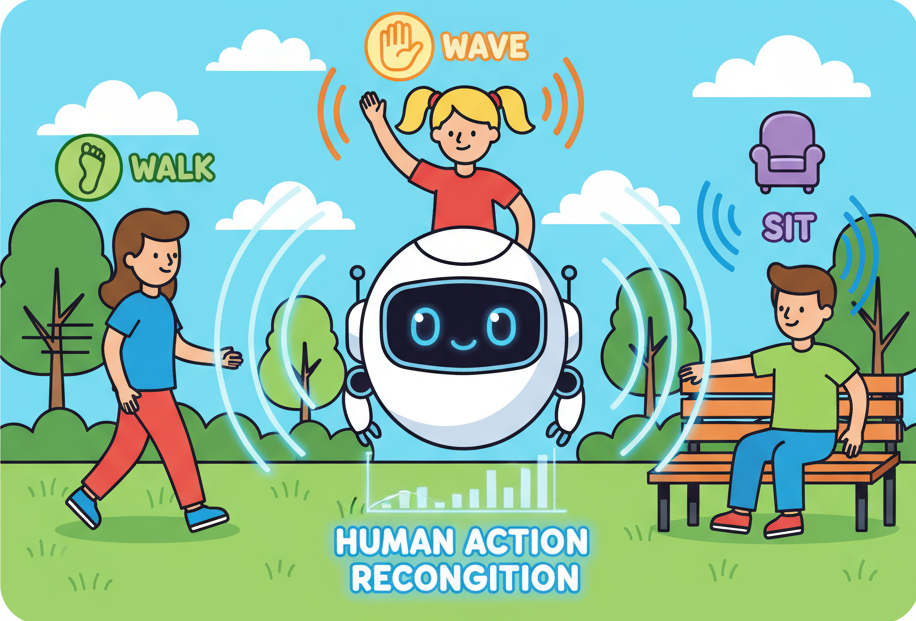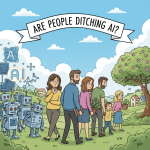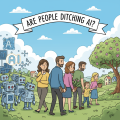This question sits at the exciting intersection of artificial intelligence, computer vision, and behavioral analytics. In 2025, AI systems have made remarkable strides in interpreting and understanding human movements, from simple gestures to complex activities. But how accurate are these detections, and what real-world uses do they have? This blog explores the capabilities, challenges, and applications of AI in detecting human actions, providing valuable insights for professionals and everyday users alike.
What Is Human Action Recognition in AI?
Human action recognition (HAR) is a field where AI analyzes data—usually visual inputs like videos or sensor readings—to identify and classify physical actions performed by people. These actions range from walking and waving to more intricate activities such as typing, exercising, or interacting with objects.
At its core, HAR combines:
-
Computer Vision: Using cameras and image processing techniques.
-
Deep Learning Models: Convolutional neural networks and recurrent neural networks analyze spatial and temporal features.
-
Sensor Data Integration: Wearables and IoT devices provide motion and biometrics data.
How Does AI Detect Human Actions?
AI uses several methods to detect and understand human actions:
-
Video Frame Analysis: Extracts features from video frames, tracking key points like joints and limbs to interpret poses and movement trajectories.
-
Pose Estimation: Algorithms model body parts’ positions to map human posture dynamically.
-
Motion Trajectory Modeling: AI tracks motion paths over time to distinguish between actions.
-
Multimodal Data Fusion: Combines visual, audio, and sensor data for richer, more accurate detection.
These techniques allow AI to classify actions in real time with high accuracy, underpinning applications in numerous sectors.
Accuracy and Challenges of AI in Detecting Human Actions
Accuracy Levels
State-of-the-art AI models achieve accuracy rates exceeding 90% in controlled environments on benchmark datasets. However, in real-world scenarios, environmental factors such as lighting, occlusion, camera angle, and crowd density can reduce precision.
Challenges
-
Complexity of Human Motion: Highly variable and context-dependent actions challenge AI’s consistency.
-
Data Privacy and Security: Capturing video or sensor data raises ethical and privacy concerns.
-
Bias and Inclusivity: Models trained on limited datasets may fail to generalize across diverse populations and abilities.
-
Real-time Processing Needs: Balancing accuracy and computational speed for live monitoring is demanding.
High-Impact Applications of AI Human Action Detection
-
Healthcare Monitoring: Detecting falls, abnormal movements in elderly or patients for timely intervention.
-
Security and Surveillance: Identifying suspicious behaviors or unauthorized access in sensitive areas.
-
Sports Analytics: Tracking athlete performance and biomechanics precisely.
-
Retail and Customer Experience: Analyzing shopper behavior patterns and movements for personalized marketing.
-
Human-Computer Interaction: Gesture and motion-controlled devices for accessibility and gaming.
-
Autonomous Vehicles: Understanding pedestrian actions to enhance safety.
Future Trends in Human Action Recognition AI
-
Improved Multimodal Sensing: Integrating more sensor types (thermal, infrared) to boost accuracy and robustness.
-
Edge Computing: Performing AI detection locally on devices to reduce latency and enhance privacy.
-
Explainable AI: Offering transparent reasoning on detected actions for trust and compliance.
-
Ethical AI Design: Prioritizing fairness, inclusivity, and user autonomy in action recognition systems.
Actionable Tips for Professionals
-
For Developers: Focus on training with diverse datasets to minimize bias and improve real-world application robustness.
-
For IT Managers & CTOs: Assess AI solutions for both performance and ethical implications before deployment.
-
For Marketers & Content Creators: Leverage AI-based behavioral analytics to tailor content dynamically.
-
For Healthcare Professionals: Explore AI tools for predictive monitoring but combine them with expert human judgment.
Frequently Asked Questions (FAQs)
1. Can AI detect all types of human actions?
AI excels at recognizing routine and well-defined actions but may struggle with highly subtle or context-specific ones.
2. How accurate is human action detection AI?
Accuracy varies by context but often exceeds 85-90% in controlled scenarios; real-world factors can reduce this.
3. What data do AI systems use to detect actions?
Primarily video feeds, sensor inputs (accelerometers, gyroscopes), and sometimes audio data.
4. Are there privacy concerns with AI action detection?
Yes, capturing and analyzing personal movements must comply with data protection laws and ethical standards.
5. How is AI impacting industries with action detection?
It enhances automation, safety, customer insights, and accessibility across healthcare, security, sports, retail, and more.
Conclusion
Can AI detect human actions? Undeniably, yes—with growing accuracy and expanding applications. However, challenges in privacy, fairness, and contextual understanding remain critical to address. By advancing ethically sound and technologically robust systems, AI’s ability to decode human behavior promises substantial benefits for industries and individuals worldwide. Embracing these solutions thoughtfully will shape a safer, more responsive future.
Call to Action:
Interested in integrating human action detection AI in your organization? Prioritize ethical deployment, invest in diversity-conscious training data, and engage with AI experts to harness its full potential responsibly.








